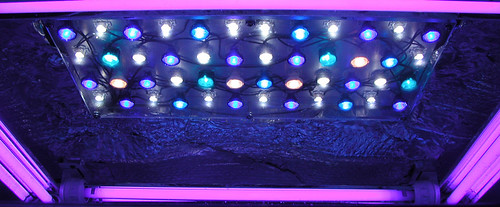How much carbon are you running? What type of carbon? And how often are you replacing it? On my 55G tank, the one that corals are going better in, things were good the first 5 months after setup, then at month 6 was when I think DOC levels got too high and some SPS corals browned out (They were brown in the 75G tank, moved them over to the 55G and they colored up for months, then started browning again in that tank). That was when I added carbon. I put in A LOT of carbon to reduce the DOCs initially. 3 cups of ROX 0.8 carbon replaced weekly for the first 3 weeks was what I did, 2 cups worth in a filter bag in the sump and 1 cup in a filter bag in the overflow... now I am using 2 cups of carbon in a bag in the overflow and replacing it every 2-3 weeks since my corals look like they are moving in a positive direction. Just going off observation, but I think the DOC levels are good now and why the corals are coloring up more each day. Similar thinking with carbon as people who are working on a Phosphate problem. If you have phosphates in the 1.0+ range and try and use GFO to fix the problem, it is going to take a ton of GFO initially to do that much work, a reactor full and replaced every 2 days for a month to get levels down to the .03-.09 area, but once you get levels down you can use a smaller amount and replace it far less frequently. Only difference is I can't measure DOCs like I can phosphates, I can pretty much only go off observations to give me clues on how things are going and guess on the correct amount of carbon and replacement schedule.Originally Posted by kotlec



 Reply With Quote
Reply With Quote



